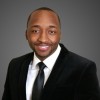CMA/LPN, Specialist Clinic en Cass Regional Medical Center
Cass Regional Medical Center · Harrisonville, Estados Unidos De América · Onsite
- Junior
- Oficina en Harrisonville
Job Code 516
CASS REGIONAL MEDICAL CENTER
Job/Position Description
Employee Name: ___________________________________
Department Name: Specialists Clinic, Rock Haven Specialty Clinic
Title: Specialist Clinic LPN
EEOC Classification: Technician/Non-Exempt
Date: ___________________________
PART ONE: Dimension and Description
Primary Purpose: To provide safe quality patient care while following all standards of care and regulatory requirements. Provide timely and accurate documentation to assist in billing of services to ensure a complete medical record. Provide Patient and family education. Ensure patient satisfaction by assisting in identification and implementation of strategic initiatives in accordance with hospital mission and values.
Formal Policy-Setting Responsibilities: Formally responsible for making recommendations regarding policies associated with the job's purpose and essential responsibilities.
Routine Decision Making: Determine patient/ physician needs and act accordingly.
Formal Supervisory Responsibility: No formal supervisory responsibility.
Required Knowledge: Knowledge of nursing skills; venipuncture; patient triage; pharmaceuticals; operation of equipment; insurance company requirements, disease processes, regulatory requirements.
Required Skills and Ability: Organization and Problem solving, effective, professional and interpersonal communication skills; Ability to multi-task and prioritize patient assessment and nursing care, Ability to act independently. Use of critical thinking skills to identify, analyze and prioritize issues. Assist in identification of solutions in collaboration with others.
Unusual Working Conditions: Risk of blood, body fluid contamination. Potential exposure to hazardous drugs and chemicals.
Education and Certification/ Registration Required for the Position: Technical or vocational school education with current LPN license in the State of Missouri; BLS required.
Age Specific Competencies: Provides care for birth to pediatric (birth-2 yrs.), pediatric/child patients between (2 yrs-12 yrs); adolescent patients between 12 to 18 years of age; adult patients between 18 to 64 years; and geriatric patients 65 years and older.
PART TWO: Essential Responsibilities and Tasks
A. Assists in implementation of plan of care for all assigned patients daily. (70% of time)
1. Sets up appropriate equipment and/or instruments for procedures as directed by provider.
2. Reviews and updates patient history and reason for visit at each visit. Obtains test results and other documentation.
3. Identifies the patient using the 2 approved patient identifiers prior to any patient care. 100% of the time.
4. Documents vital signs to include weight, height, blood pressure, pulse, and temperature at each visit. Documents pain level and other regulatory requirements at each visit including medication reconciliation.
5. Documents and reports all critical vital signs and critical test results to the ordering provider per hospital policy and implements further orders immediately. Documents details in the patient record.
6. Maintains patient care documentation logs as assigned per clinic/provider and regulatory agencies.
7. Assist providers with documentation assistance as applicable.
B. Actively participates in clinic operations. (20% of time)
1. Orders supplies and maintains appropriate levels of inventory for effective patient cost containment.
2. Responsible for care (cleaning and storage) of equipment and instruments prior to, during and after procedure, including appropriate transfer to the soiled room. Follows all manufacturer instructions for use (IFO) for user cleaning ________ and equipment and HLD (High level disinfection) as appropriate.
3. Participates in process improvement activities.
4. Reports all emergent problems to manager. Tags and removes malfunctioning patient care equipment immediately and complete work requisition.
5. Cleans exam and procedure rooms between patients, and at the end of each clinic.
6. Completes monthly quality checks as directed.
7. Assist in training of new staff.
C. Assists provider with all procedures and carries out orders. (5% of time)
1. Appropriately prepares rooms prior to each patient visit, obtaining equipment and instruments.
2. Explains procedure to each patient prior to the procedure and obtains consent if required prior to the procedure.
3. Identifies the patient by using the two approved patient identifiers at each clinic visit- prior to procedures or medications.
4. All provider orders are carried out and appropriately documented in the medical record.
5. Medications are administered per policy. For each medication administered, documents in the medical record: medication, dose, site, route, time and patient adverse reaction, if present.
6. Effectively communicates discharge instructions to patient and responsible party at the time of discharge. Patient receives written discharge instruction at the end of the every visit.
D. Manages telephone calls, faxes, and messages. (5% of time)
1. All telephone calls are returned in a professional manner and documented by the end of the shift. All patient phone calls are documented in the medical record.
2. All telephone calls, faxes, and messages are carried out per provider's instructions, and documented in the medical record.
3. Assist in scheduling of patient appointments and testing.
E. Performs clerical and information technology functions (Documentation and Authentication) (20%) Refer to Job Description: Scribe/Documentation Assistant. To capture accurate and detailed documentation of the physician/provider - patient encounter in a timely manner. This position is not permitted to make independent observations, decisions, or translations while capturing or entering information into the medical record. This position is limited to recording interactions as dictated by the physician/provider.
1. Accompany provider upon patient interview and examination. Utilizing AIDET, introduce self to patient and explain role.
2. Utilizing own unique username and password: (Under no circumstances is the scribe to utilize provider username and password)
3. Assist and remind provider to review all completed documentation by Scribe/Document Assistant, make any necessary amendments, and sign the medical record.
4. Ensure accuracy and completion of the medical record in collaboration with the provider- check medical record for inconsistencies, notify provider and check to ensure the inconsistencies are resolved.
5. Notify the provider of any EHR alerts. Providers will direct the scribe on the proper response for alerts. Alerts must be addressed by the provider.
6. Assist the provider in navigating the EHR, responding to messages as directed by the provider, locating information for review (previous notes, reports, test results)
7. Maintain confidentiality and privacy of information in accordance with HIPAA regulations and organizational policies.
8. Authenticate the note with name and discipline. The EHR must identify the scribe’s identity and authorship of the documentation.
ESSENTIAL PHYSICAL REQUIREMENTS
TYPE OF WORK (Check One)
Sedentary Work: Lifting 10# maximum and occasionally lifting and/or carrying such articles as dockets, ledgers and small tools. Jobs are sedentary; if walking and standing are required only occasionally.
x Light Work: Lifting 20# maximum with frequent lifting and/or carrying of objects weighing up to 10#. Even though the weight lifted may be only a negligible amount, a job is in this category when it requires walking or standing to a significant degree or pushing and pulling of arm and/or leg controls.
Medium Work: Lifting 100# maximum with frequent lifting and/or carrying of objects weighing up to 25#.
Heavy Work: Lifting 100# maximum with frequent lifting and/or carrying of objects weighing up to 50#.
Very Heavy Lifting: Lifting objects in excess of 100# with frequent lifting and/or carrying of objects weighing 50# or more.
PHYSICAL DEMANDS (Check those which apply)
x Lifting: Raising or lowering an object from one level to another (includes upward pulling).
x Carrying: Transporting an object, usually holding it in hands or arms or on the shoulders.
x Pushing: Exerting force upon an object so that the object moves away from the force (including slapping, striking, kicking, and treadle actions).
Pulling: Exerting force upon an object so that the object moves toward the force (includes jerking).
Climbing: Ascending or descending ladders, stairs, scaffolding, ramps, poles, ropes, and the like, using the feet and the legs and/or hands and arms.
x Balancing: Maintaining body equilibrium to prevent falling when walking, standing, crouching, or running on a narrow, slippery, or erratically moving surfaces; or maintaining body equilibrium when performing gymnastic feats.
x Hearing: Ability to determine audible communication.
x Stooping: Bending the body downward and forward by bending the spine at the waist.
x Kneeling: Bending the legs at the knees to come to rest on the knee or knees.
x Crouching: Bending the body downward and forward by bending the legs and spine.
Crawling: Moving about on the hands and knees or hands and feet.
x Reaching: Extending the hands and arms in any direction.
x Handling: Seizing, holding, grasping, turning, or otherwise working with the hand or hands (fingering not involved).
x Fingering: Picking, pinching, or otherwise working with the fingers primarily (rather than with the whole hand or arms as in handling).
Repetitive Motions: Substantial movements (motions) of the wrist, hands, and/or fingers.
x Feeling: Perceiving such attributes of objects and materials as size, shape, temperature, or texture by means of receptors in the skin, particularly those of the finger tips.
x Speaking: Expressing or exchanging ideas by means of the spoken word. Those activities in which they must convey detailed or important spoken instructions to other workers accurately, loudly, or quickly.
x Seeing: Obtaining impressions through the eyes of the shape, size, distance, motion, color or other characteristics of objects.
Including Major Visual Functions
x Acuity, far - clarity of vision at 20 feet or more.
x Acuity, near - clarity of vision at 20 inches or less.
x Depth perception - ability to judge distance and space relationships so as to see objects where and as they actually are.
x Field of vision - area seen up and down or to the right or left while eyes are fixed.
x Accommodations - adjustment of the lens of the eye to bring an object into sharp focus.
x Color vision- the ability to identify and distinguish colors.
WORKING CONDITIONS (Check those which apply)
x Inside: Worker spends approximately 75% or more of time inside.
Outside: Worker spends approximately 75% or more time outside.
In/Outside: Activities occur inside or outside in approximately equal amounts.
Extremes of Cold: Temperature sufficiently low to cause marked bodily discomfort unless worker is provided with exceptional protection.
Extremes of Heat: Temperature sufficiently high to cause marked bodily discomfort unless worker is provided with exceptional protection.
Temperature Changes: Variations in temperature which are sufficiently marked and abrupt to cause noticeable bodily reactions.
x Wet: Contact with water or other liquids.
Humid: Atmospheric condition with moisture content sufficiently high to cause marked bodily discomfort.
x Noise and Vibration: Sufficient noise, either constant or intermittent to cause marked distraction or possible injury to the sense of hearing and /or sufficient vibration (production of an oscillating movement or strain on the body or its extremities from repeated motion or shock) to cause bodily harm if endured day after day.
x Hazards: Situations in which the individual is exposed to the definite risk of the bodily injury.
Fumes: Smoky or vaporous exhalations, usually odorous, thrown off as the result of combustion or chemical reaction.
x Odor: Noxious smells, either toxic dust, fumes, gases, vapors, mists or liquids which cause general or localized disabling conditions as a result of inhalation or action to the skin.
Toxic Conditions: Exposure to toxic dust, fumes, gases, vapors. Mists or liquids which cause general or localized disabling conditions as a result of inhalations or action to the skin.
Infectious Disease: Risk of exposure to biohazardous materials, blood, body fluid contamination.
Dust: Air filled with small particles of any kind, such as textiles dust, flour, wool, leather, feathers, etc., and inorganic dust including silica and asbestos, which make the workplace unpleasant or are the source of occupational disease.
Poor Ventilation: Insufficient movement of air causing a feeling of suffocation; or exposure to drafts.
Identify and describe any additional physical demands or unusual working conditions that were not previously covered. ________________________________________________________
Solicitar ahora






